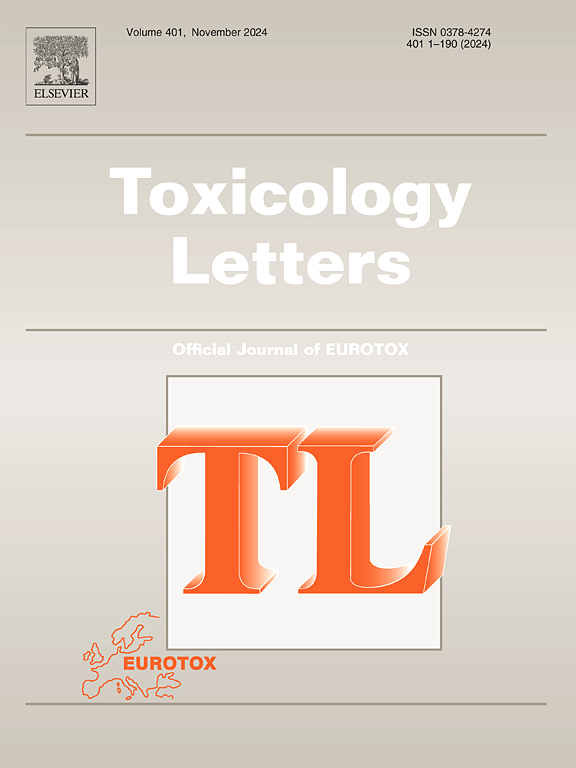利用表达药物代谢酶的转基因Caco-2细胞,建立了评估化学药物对人体肠道屏障完整性影响的体外安全性评价模型。
IF 2.9
3区 医学
Q2 TOXICOLOGY
引用次数: 0
摘要
人肠道细胞系Caco-2被广泛用作体外人肠道屏障完整性模型,用于评估包括药物在内的外源性药物的安全性,但Caco-2与人肠道的化学代谢酶谱存在差异。特别是,Caco-2细胞的特点是存在羧酸酯酶1 (CES1),细胞色素P450 3A4 (CYP3A4)和尿苷二磷酸葡萄糖醛基转移酶1A1 (UGT1A1)的表达较低。为了克服这些差异,已经产生了一系列转基因Caco-2细胞系,但它们作为人类肠道模型来评估外源性药物对肠道屏障完整性的影响的适用性尚不清楚。在这项研究中,我们评估了伊立替康(CPT-11, CES和CYP3A4的底物)和cn -38 (CPT-11的CES介导的活性代谢物,UGT1A1的底物)对cco -2细胞系屏障完整性的影响。CPT-11对ces1敲除表达cyp3a4的细胞的毒性低于对亲代Caco-2细胞和表达cyp3a4的细胞的毒性。CPT-11治疗后,CES1的缺失减弱了屏障松动和通透增强活性。因此,CES1的表达导致了对CPT-11在亲本Caco-2细胞肠道生物转化的高估。在ces1敲除表达cyp3a4的细胞中引入UGT1A1后,SN-38的细胞毒性降低,肠道屏障松动和对大分子的通透性减弱。这些发现表明,ces1敲除、CYP3A4-和ugt1a1表达的Caco-2细胞可能是评估药物和外源药物对肠道屏障功能风险的有用模型。本文章由计算机程序翻译,如有差异,请以英文原文为准。
An in vitro safety evaluation model for assessing the effects of a chemical drug on the human intestinal barrier integrity using genetically modified Caco-2 cells expressing drug-metabolizing enzymes
The human intestinal cell line Caco-2 is widely used as an in vitro human intestinal barrier-integrity model for safety evaluation of xenobiotics including drugs, but the profiles of chemical-metabolizing enzymes differ between Caco-2 and the human intestine. In particular, Caco-2 cells are characterized by the presence of carboxylesterase 1 (CES1), lower expression of cytochrome P450 3A4 (CYP3A4) and uridine diphosphate glucuronosyltransferase 1A1 (UGT1A1). To overcome these differences, a series of genetically modified Caco-2 cell lines have been generated, but their applicability as a human intestinal model to evaluate effects of xenobiotics on the intestinal barrier integrity remains unclear. In this study, we evaluated the effects of irinotecan (CPT-11, a substrate of CES and CYP3A4) and SN-38 (a CES-mediated active metabolite of CPT-11, a substrate of UGT1A1) on barrier integrity in these Caco-2 cell lines. CPT-11 was less toxic in CES1-knockout CYP3A4-expressing cells than in the parental Caco-2 cells and CYP3A4-expressing cells. Deletion of CES1 attenuated the barrier-loosening and permeability-enhancing activity by treatment with CPT-11. Thus, expression of CES1 led to overestimation of intestinal biotransformation of CPT-11 in the parental Caco-2 cells. When UGT1A1 was introduced in CES1-knockout CYP3A4-expressing cells, cytotoxicity of SN-38 was decreased, and intestinal barrier-loosening and permeability to macromolecules were also attenuated. These findings indicate that the CES1-knockout, CYP3A4- and UGT1A1-expressing Caco-2 cells may be a useful model for evaluating risks of drugs and xenobiotics on intestinal barrier function.
求助全文
通过发布文献求助,成功后即可免费获取论文全文。
去求助
来源期刊

Toxicology letters
医学-毒理学
CiteScore
7.10
自引率
2.90%
发文量
897
审稿时长
33 days
期刊介绍:
An international journal for the rapid publication of novel reports on a range of aspects of toxicology, especially mechanisms of toxicity.
 求助内容:
求助内容: 应助结果提醒方式:
应助结果提醒方式:


